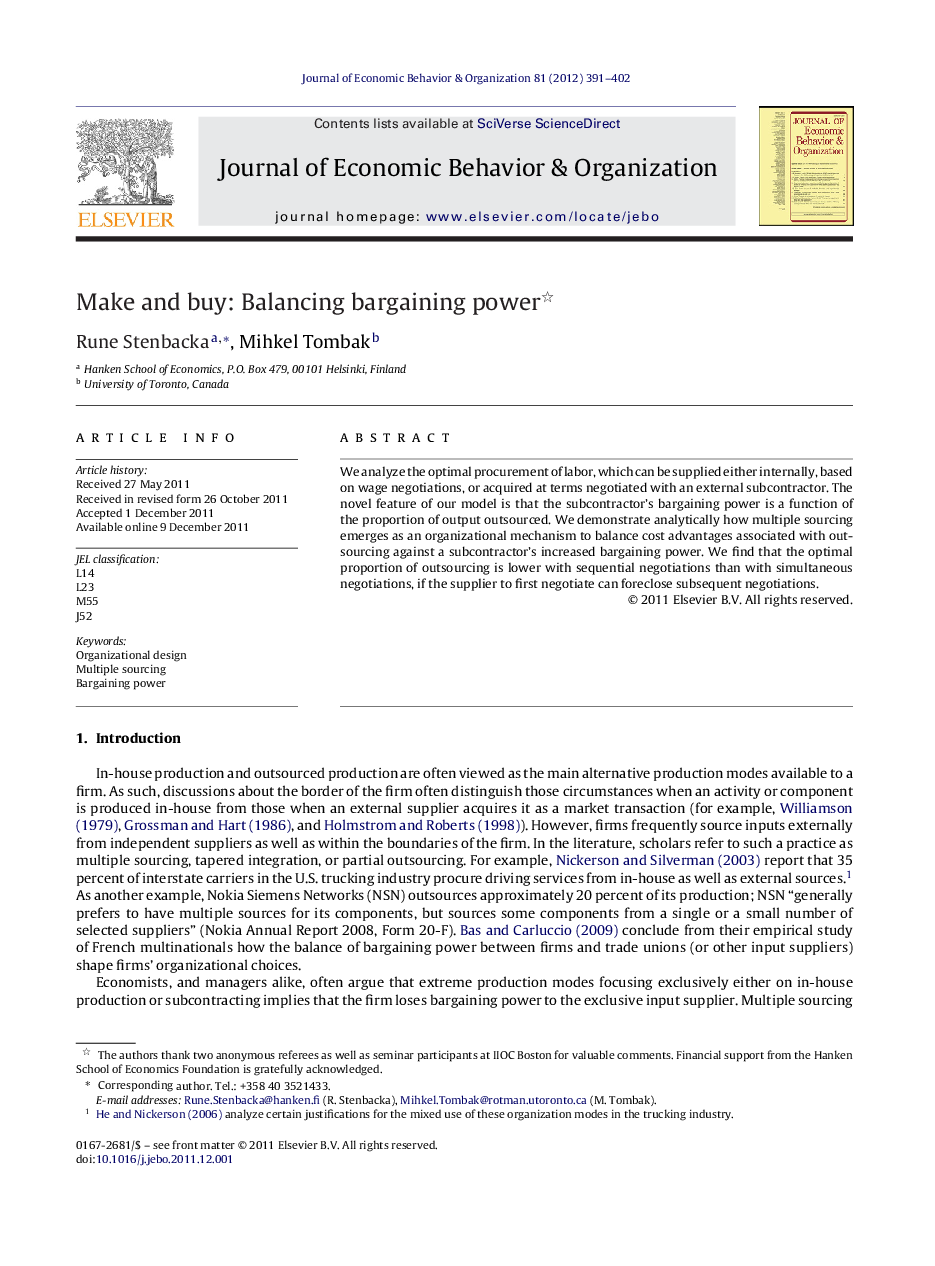| Article ID | Journal | Published Year | Pages | File Type |
|---|---|---|---|---|
| 883753 | Journal of Economic Behavior & Organization | 2012 | 12 Pages |
We analyze the optimal procurement of labor, which can be supplied either internally, based on wage negotiations, or acquired at terms negotiated with an external subcontractor. The novel feature of our model is that the subcontractor's bargaining power is a function of the proportion of output outsourced. We demonstrate analytically how multiple sourcing emerges as an organizational mechanism to balance cost advantages associated with outsourcing against a subcontractor's increased bargaining power. We find that the optimal proportion of outsourcing is lower with sequential negotiations than with simultaneous negotiations, if the supplier to first negotiate can foreclose subsequent negotiations.
► A new explanation for multiple sourcing. ► Cost advantages with outsourcing versus subcontractor's increased bargaining power. ► Subcontractor's bargaining power a function of outsourced production. ► Less outsourcing with sequential than with simultaneous negotiations.
